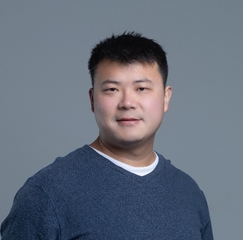检测到您当前使用浏览器版本过于老旧,会导致无法正常浏览网站;请您使用电脑里的其他浏览器如:360、QQ、搜狗浏览器的极速模式浏览,或者使用谷歌、火狐等浏览器。
 下载Firefox
下载Firefox
检测到您当前使用浏览器版本过于老旧,会导致无法正常浏览网站;请您使用电脑里的其他浏览器如:360、QQ、搜狗浏览器的极速模式浏览,或者使用谷歌、火狐等浏览器。
 下载Firefox
下载Firefox
学术报告
题 目: Biocontrol of biomolecular systems: emergent polyhedral constraints of bioregulatory networks yield a rule of life for modeling metabolism dynamics
Assistant Professor in Engineering, Westlake University
Principle Investigator of the Biomachine Architecture and Control (BMAC) group
时 间: 3月28日(周四)11:00-12:00
主持人: 林杰 研究员
摘 要:
The robust yet versatile behaviors of biological organisms act via biomolecular processes in cells that happen through catalysis by enzymes. To regulate the rate of these processes, substrates, regulator proteins, cofactors, and other helper molecules bind with the catalytic enzyme to change its activity. Existing methods to analyze regulation of catalytic processes require simplifications by over-abundance assumptions, exemplified by the Michaelis-Menten formula. However, recently uncovered complex regulatory circuits with combinatorial or highly dynamic behaviors in metabolic engineering and developmental and synthetic biology break these assumptions. This imminent future of science and engineering on biological systems calls for a method to capture the full regulatory profile for holistic analysis, without restrictive assumptions. In this talk I will show a novel foundation of bioregulation based on an analysis of binding networks using differential geometry and convex polyhedra that captures bioregulation holistically in terms of reaction order polyhedra (ROP). ROP can be tractably analyzed and scalably computed for arbitrary binding networks. I will also show how this new foundation constitutes a rule of life, flux exponent control (FEC), that enables a radically new method to model metabolism dynamics via optimal control. FEC can capture fast metabolism dynamics on the timescale of seconds to hours that are previously inaccessible to the state-of-the-art method, flux balance analysis. FEC can predict dynamic features emerging directly from metabolic network stoichiometry, e.g. glycolytic oscillations and cell growth arrest from shocks. Looking into the future, ROP and FEC form a holistic and dynamic foundation for bioengineers to analyze and design system level architectures governing cellular dynamics, with applications ranging from metabolic engineering, gene regulatory circuits, cell survival and growth, and microbial communities.
Dr. Fangzhou Xiao got his Bachelor’s degree in bioengineering and mathematics with highest distinction at Washington University in St Louis (2012-2016). In 2016 he went on to study for a PhD in bioengineering mentored by John C Doyle, “a living legend in the field of robust control.” He graduated in summer 2022, with a thesis laying a foundational theory for analysis and design of biomachines, from metabolism to bioregulatory circuits in cells. He went on to a postdoc at Suckjoon Jun lab at University of California, San Diego, to learn about bacterial physiology and how the theoretical foundation can extend to microbial growth and survival. In Jan 2024, he took on the unique opportunity to start the BioMachine Architecture and Control (BMAC) lab at Westlake University as an assistant professor to incubate technological infrastructure enabling a bio-industrial revolution.
